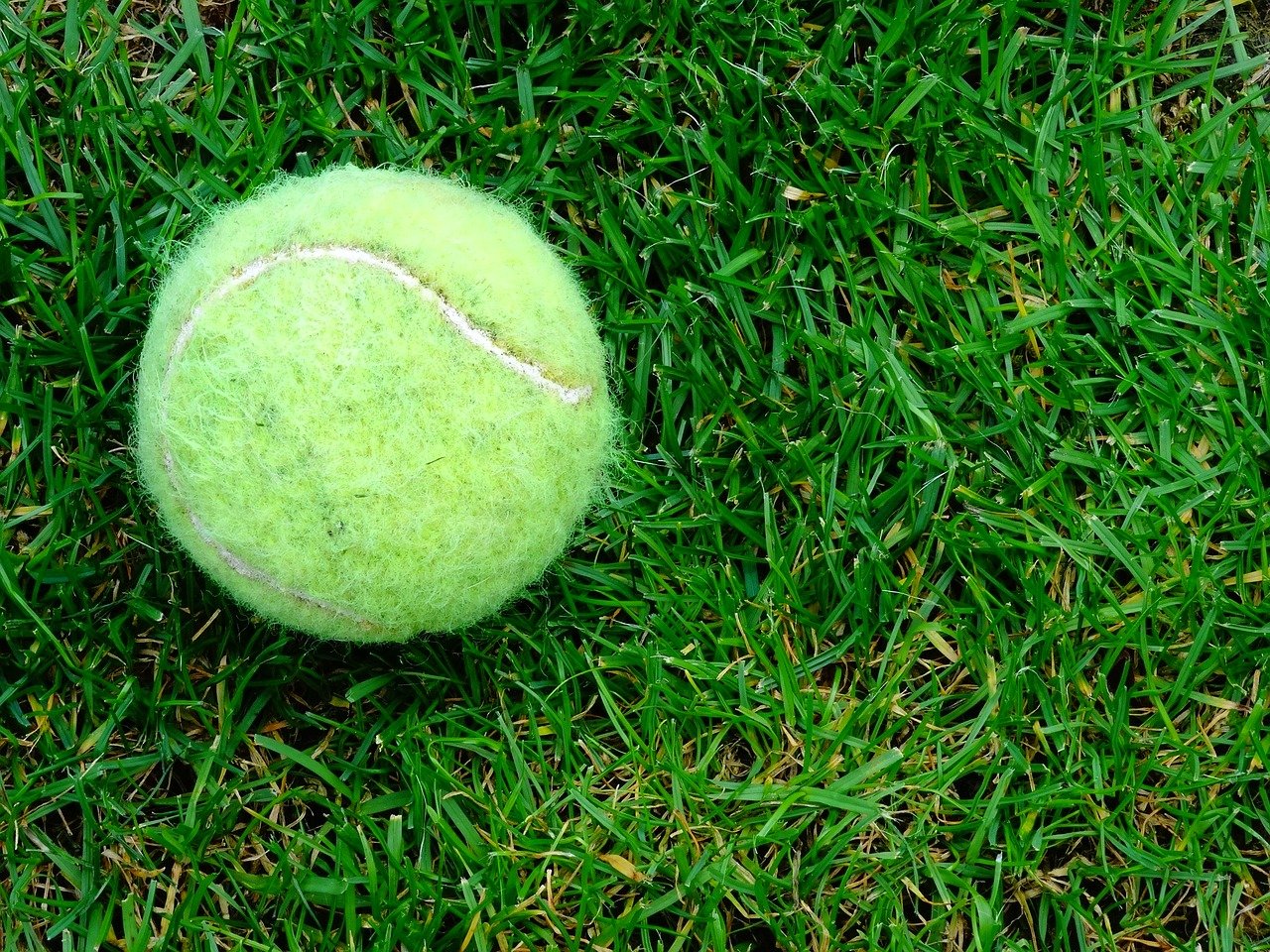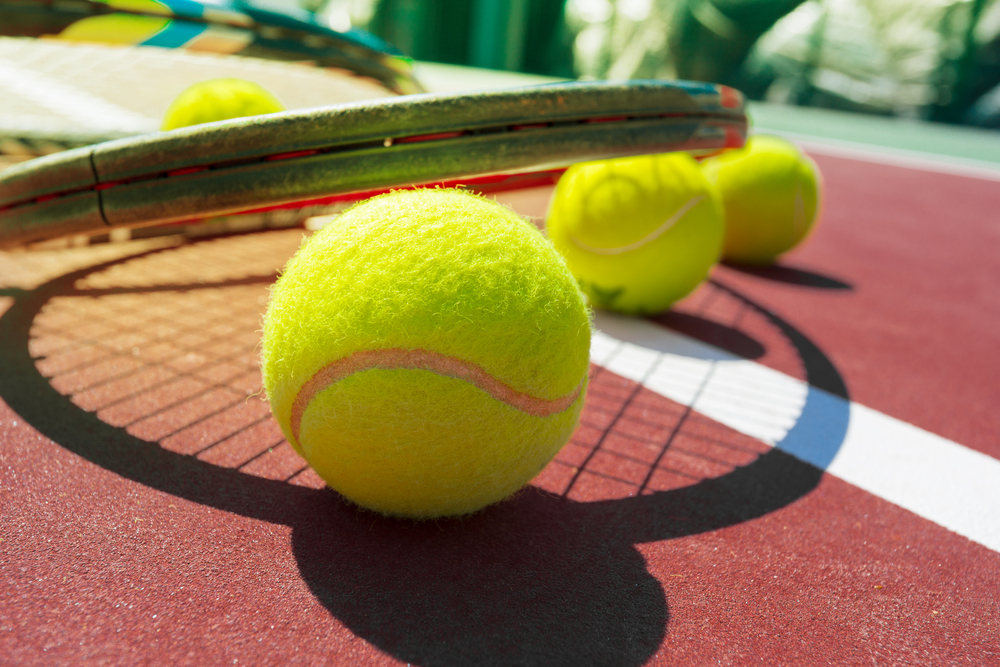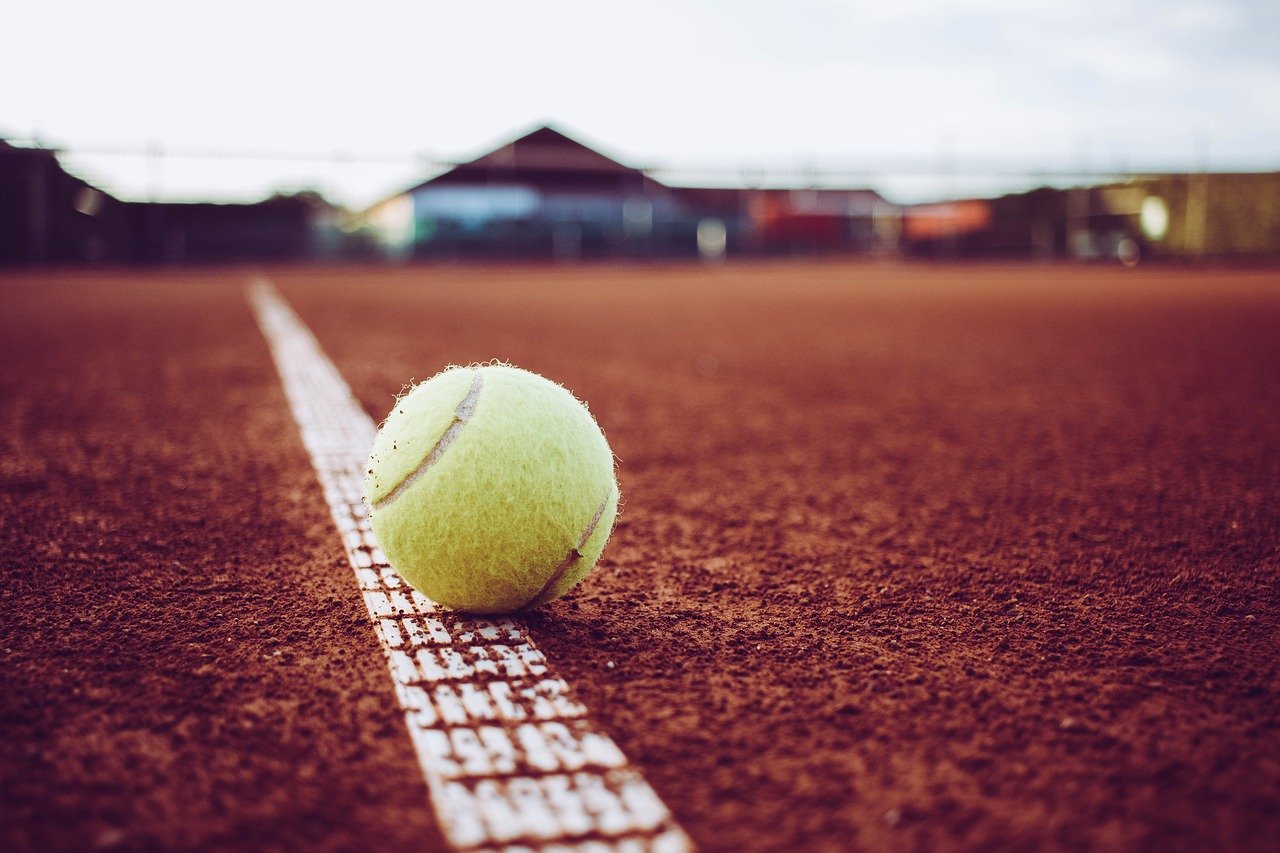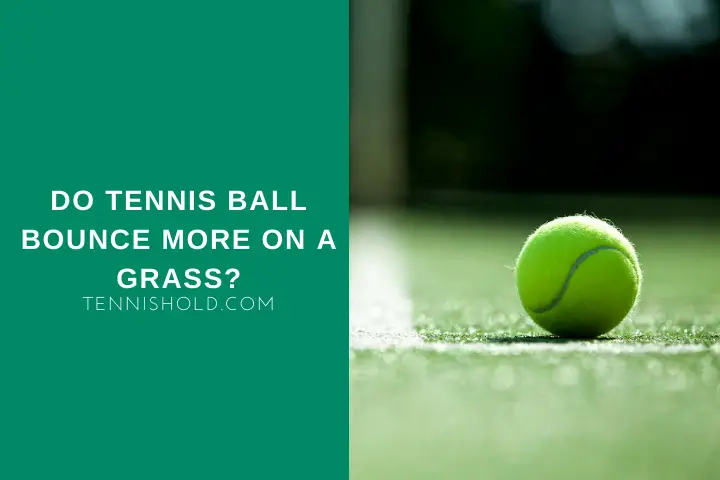The version of tennis that we know today arose in the mid-19th century. This version of tennis was known as lawn tennis. Lawn refers to an area of grass that is regularly mowed.
If the modern game originated on grass, the ball obviously does bounce on grass. But does it bounce more on grass?
Tennis balls will bounce less on grass than clay or hard courts. Even though the ball will bounce lower on grass, it does bounce faster. To be a good grass player, you will need to be fast and able to deal with low balls.
Before the open era, the grass was the most common surface used in tennis. Before 1974, Rolland Garros was the only grand slam not played on grass. The Australian Open continued to use grass courts up until 1987.
Wimbledon, the oldest tennis tournament in the world, is the only grand slam to still use grass as a surface.
In this piece I will be covering:
- How a tennis ball performs on grass
- The main difference between hard and grass courts
- The surface in which the ball will bounce best
If you are keen to learn more about the surfaces and how they affect the bounce of the ball, read on!
How Well Does A Tennis Ball Bounce On Grass?

Of the surfaces, a tennis ball will bounce lowest on grass. The reason for this is the components of grass.
The grass is a slippery surface. As the ball hits the ground, it will begin to skid, causing the ball to not jump up as much. If the grass is wet, it will bounce even lower.
Even if you can hit heavy topspin, it will be a challenge getting the ball to bounce above the opponent’s head.
The ball will bounce faster on grass than on any other surface. The reason it is so fast is the same as why it bounces so low. As the ball skids, it maintains much of its speed.
Due to the speed of the ball on the grass, hard hitters and servers benefit big time. There is no easier surface to hit aces on than grass.
It is no coincidence that Raonic, Andersen, and Cilic have had success at Wimbledon.
The rallies will also be shorter on grass. As the ball is faster, players have less time to get there. Thus, in most cases, the winner of the point is the one that can strike fast and gain the upper hand.
On clay courts the ball slows down as it hits the ground as well as bouncing high. This is the complete opposite of grass and allows the rallies to last longer.
What Is The Difference Between Hard And Grass Court?

Hard courts are the most common type of surface. This is the case throughout the entire world. The reason being that they are very easy to maintain.
Clay courts require sweeping, watering, and brushing. Not to mention the cost of ordering new clay. Clay courts can also get sludge-like if it has been torrential rain.
Grass courts are a similar story. Grass needs a groundsman who can regularly mow and take care of them, ensuring they meet ITF standards.
Grass courts also have the downside of being unplayable if it has rained.
Hard courts are often viewed as the middle point between clay and grass. The grass is fast and low. Clay is slow and high.
While there are many different types of hard courts, the bounce is usually of medium height compared to clay and grass.
The same goes for speed; it comes through slower than grass but faster than clay.
Hard courts are usually made from asphalt or concrete. The bounce of the ball on hard courts is more predictable than on grass. This is because the consistency of the surface is the same.
On a grass court, you can get parts of the grass growing at different rates. This can cause the ball to bounce differently. Also, if a section of the grass-court is particularly wet, the ball will skid even more.
Even if you have a wetter patch on a hard court, the bounce will not be as affected as grass. There should not be one section of the court thicker than another.
As hard courts are a middle ground between grass and clay, the tournaments are usually more competitive.
If you have a match between a clay and grass court specialist on hard, the surface components will make the match more even.
Grass courts will favor aggressive players who are not afraid to approach the net. The past 40 years have seen a significant reduction in grass-court tournaments on the pro tour.
This reduction of grass tournaments is a major reason why serving, and volleying has become less common.
The ball bounces lowest on grass and skids when it hits the surface. So you have to do a lot of bending.
It’s why serve and volley was the most popular style of play when the Australian Open, Wimbledon and the US Open were all played on grass
What Is The Best Bouncing Tennis Surface?

The best bouncing surface for tennis balls is definitely clay. The two main types of clay are red and green clay. The overwhelming majority of clay courts worldwide are red clay.
Green clay is often referred to as American clay.
The main difference is that green clay allows the ball to bounce a bit faster. Unfortunately, I have only played on green clay once. For me, it felt like a slippery hard court with a bit of sand on it to allow you to skid.
The reason clay allows the ball to bounce higher is that it is a high-friction surface. When tennis balls contact high-friction surfaces, they experience a sudden increase in spin.
As the bottom of the ball slows down more than the top, the topspin sends the ball up more when it contacts the ground. Thus, it increases topspin, but it also slows down the ball.
One reason is that on this surface, the dust of clay will stick to the ball. This then causes it to slow down after contacting the ground.
Consistent baseline players favor clay because they can last longer in rallies than hard-hitting, big servers.
As the ball bounces higher on clay, it takes longer to reach the ground. This means that the ball will come through to the player slower than on grass or hard. So you have more time to get there.
Flat aggressive players can try and take the ball on the rise to suit their style. This comes with increased risk, though.
By taking the ball on the rise, you have less time to react. But if you manage to make the shot, you take time away from your opponent.
Also read: Can You Hit The Ball Before It Bounces?
Final Words
Tennis balls will bounce on grass, but they will bounce less if the grass is not maintained correctly.
Have you played on grass before? What are your thoughts? Maybe you’ve played on a makeshift court in your back garden.

